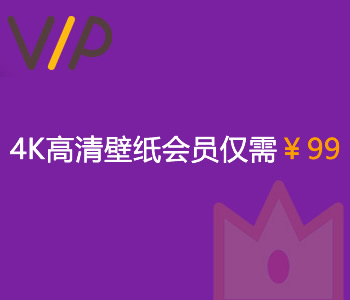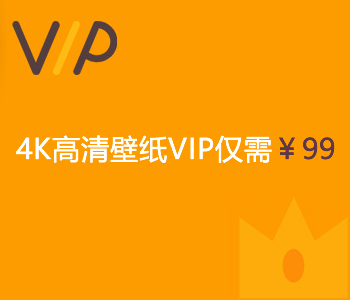前言
需求需要实现手持终端设备与 web 网页的点对点数据传输,不希望有服务器参与,想到了 web 的 USB 与 Bluetooth API,对 Web Bluetooth API 进行了研究。
蓝牙 GATT 基础知识
GATT(通用属性配置文件,蓝牙低功耗(BLE)中定义的一种规范)定义了如何在蓝牙低功耗设备之间进行数据的传输和交互。它规定了蓝牙设备之间的数据格式、通信协议以及数据的组织方式。通过 GATT,不同的蓝牙设备可以交换各种类型的数据,如传感器数据、设备状态信息等。
GATT 采用分层的组织结构,分为 Service(服务)、Characteristic(特性)、Property(属性)三层:
- Service: 一个蓝牙设备可以有一个或多个服务,这些服务提供不同的功能,如
battery_service(电池服务)、heart_rate(心率服务) - Characteristic: 提供与服务相关的功能,比如
battery_service服务的battery_level特征提供电池电量的数据 - Property: 特性上的属性,用于操作特性值,比如
write、read用于读写特性值
Service、Characteristic 都有一个 UUID 用于标识服务、特性,Service 的 UUID 格式固定为 0x0000[xxxx]-0000-1000-8000-00805F9B34FB,其中 [xxxx] 是可变部分,其余固定,比如电池服务的 UUID 为 0000180F-0000-1000-8000-00805f9b34fb,可简写为 0x180F,当自定义蓝牙 GATT 服务时定义的 UUID 需要采用相同的格式。
在使用 Web Bluetooth API 时,我们通过服务名称或服务 UUID 来找到我们需要的蓝牙服务。
Web Bluetooth API
Web Bluetooth 所有接口构建在 Promise 之上,只支持在可信来源中使用(localhost 或 https),主要有以下接口(完整接口查看 MDN 文档):
Bluetooth:提供查询蓝牙可用性和请求访问设备的方法getAvailability:返回用户代理的蓝牙可用性requestDevice:请求蓝牙设备,返回一个BluetoothDevice实例;必须由用户手势触发,一般会弹出蓝牙选择器,如果没有可用的蓝牙选择器则默认选择匹配的第一个
BluetoothDevice:蓝牙设备相关接口,具有一个gatt属性是对BluetoothRemoteGATTServer实例的引用BluetoothRemoteGATTServer:可以理解为对 gatt 服务器的引用,通过 gatt 服务器可以获取到他所拥有的 Serviceconnected:脚本执行环境是否已与设备连接connect:脚本执行环境连接到 BluetoothDevicedisconnect:脚本执行环境断开与 BluetoothDevice 的连接getPrimaryService:通过服务别名或 UUID 获取到对应的 Service,是一个BluetoothRemoteGATTService实例getPrimaryServices:获取多个 Service
BluetoothRemoteGATTService:对 Service 的引用isPrimary:指示这是一个主要还是次要的服务getCharacteristic:获取指定 UUID 的 Characteristic 特性,是一个BluetoothRemoteGATTCharacteristic实例getCharacteristics:获取多个特性
BluetoothRemoteGATTCharacteristic:对特性的引用readValue:读取特性值writeValueWithResponse:写入特性值
看一个简单的示例:
<!doctype html><html lang="en"> <head> <meta charset="UTF-8" /> <meta name="viewport" content="width=device-width, initial-scale=1.0" /> <title>Document</title> </head> <body> <button class="request">click me</button> <script> const request = window.document.querySelector('.request'); request.addEventListener('click', async function () { const bluetooth = window.navigator.bluetooth; try { // 检查用户代理是否支持 const isSupport = await bluetooth.getAvailability(); if (!isSupport) { return window.alert('用户代理不支持蓝牙请求'); } // 请求蓝牙设备 const bluetoothDevice = await bluetooth.requestDevice({ /** 过滤器选项 */ filters: [ { /** 过滤拥有 battery_service | 0x1101 | 0000180D-0000-1000-8000-00805f9b34fb 服务的设备 */ services: ['battery_service', 0x1101, '0000180D-0000-1000-8000-00805f9b34fb'], /** 过滤名称为 RedMi Note13Pro 的设备 */ name: 'RedMi Note13Pro', /** 过滤名称前缀为 RedMi 的设备 */ namePrefix: 'RedMi' } ], /** 排除项,选项与 filters 相同 */ exclusionFilters: [], /** * 服务选项,通常需要包含此项,告诉浏览器你随后想要访问的蓝牙服务; * 如果其他选项中没有指定服务,则必须在此处指定,否则随后访问服务时抛出异常 * */ optionalServices: ['battery_service'], /** 匹配所有设备,一般不建议使用 */ acceptAllDevices: false }); // gatt 服务器 const server = bluetoothDevice.gatt; if (!server.connected) { // 创建连接 await server.connect(); } /** 获取电池 Service */ const batteryService = await server.getPrimaryService('battery_service'); /** 获取电池电量的 Characteristic */ const batteryLevelCharacteristic = await batteryService.getCharacteristic('battery_level'); /** 读取 Characteristic 值,这里是电池剩余电量 */ const batteryLevelValue = await batteryLevelCharacteristic.readValue(); /** 打印剩余电量百分比 */ console.log(`Battery percentage is ${batteryLevelValue.getUint8(0)}`); } catch (err) { window.alert('Error: ' + err.message); } }); </script> </body></html>得到的效果为:

Android 自定义 GATT 服务
简单通过上述代码搜索设备并尝试建立连接进行通讯,会发现无法达到自己想要的效果;为了更好的理解 Web Bluetooth,自定义一个 GATT 服务实现通讯是很好的方法:
package com.example.myapplicationimport android.Manifestimport android.bluetooth.BluetoothDeviceimport android.bluetooth.BluetoothGattimport android.bluetooth.BluetoothGattCharacteristicimport android.bluetooth.BluetoothGattServerimport android.bluetooth.BluetoothGattServerCallbackimport android.bluetooth.BluetoothGattServiceimport android.bluetooth.BluetoothManagerimport android.bluetooth.BluetoothProfileimport android.bluetooth.le.AdvertiseCallbackimport android.bluetooth.le.AdvertiseDataimport android.bluetooth.le.AdvertiseSettingsimport android.content.Contextimport android.content.pm.PackageManagerimport android.os.Buildimport android.os.Bundleimport android.os.ParcelUuidimport android.util.Logimport android.widget.Toastimport androidx.activity.ComponentActivityimport androidx.annotation.RequiresApiimport java.util.UUIDclass MainActivity : ComponentActivity() { @RequiresApi(Build.VERSION_CODES.S) override fun onCreate(savedInstanceState: Bundle?) { super.onCreate(savedInstanceState) initBluetoothGATT() } // 初始化蓝牙 GATT 服务并开始广播 @RequiresApi(Build.VERSION_CODES.S) private fun initBluetoothGATT() { // 获取蓝牙管理器 val bluetoothManager = getSystemService(Context.BLUETOOTH_SERVICE) as BluetoothManager // 获取蓝牙适配器 val bluetoothAdapter = bluetoothManager.adapter // 定义 gatt 服务器 var bluetoothGattServer: BluetoothGattServer? = null // 检查权限 if (checkSelfPermission(Manifest.permission.BLUETOOTH_CONNECT) == PackageManager.PERMISSION_GRANTED) { // 定义 gatt 服务器的回调 val bluetoothGattServerCallback = object : BluetoothGattServerCallback() { // 与蓝牙设备的连接状态变更 override fun onConnectionStateChange( device: BluetoothDevice, status: Int, newState: Int ) { if (newState == BluetoothProfile.STATE_CONNECTED) { Log.d(TAG, "Device connected") } else if (newState == BluetoothProfile.STATE_DISCONNECTED) { Log.d(TAG, "Device disconnected") } } // Service 被添加 override fun onServiceAdded(status: Int, service: BluetoothGattService) { if (service.uuid == SERVICE_UUID) { Log.d(TAG, "Service added successfully.") } } // 特性读取请求 override fun onCharacteristicReadRequest( device: BluetoothDevice, requestId: Int, offset: Int, characteristic: BluetoothGattCharacteristic ) { // 判断是否指定特性请求 if (characteristic.uuid == CHARACTERISTIC_UUID) { // 处理读取请求,这里可以设置返回的数据 val dataToSend = "Hello from custom characteristic!".toByteArray() // 设置特性值 characteristic.setValue(dataToSend) // 检查权限,这里是避免编辑器警告 if (checkSelfPermission(Manifest.permission.BLUETOOTH_CONNECT) == PackageManager.PERMISSION_GRANTED) { // 发送响应,必须调用此方法,web 端的 readValue 方法才能继续执行 bluetoothGattServer!!.sendResponse( device, requestId, BluetoothGatt.GATT_SUCCESS, offset, dataToSend ) } } } // 特性写入请求 override fun onCharacteristicWriteRequest( device: BluetoothDevice, requestId: Int, // 请求的特性 id characteristic: BluetoothGattCharacteristic, // 特性 preparedWrite: Boolean, responseNeeded: Boolean, // 是否需要响应 offset: Int, // 数据偏移,数据可能是分段发送的 value: ByteArray // 数据值 ) { // 判断是否指定特性 if (characteristic.uuid == CHARACTERISTIC_UUID) { characteristic.setValue(value) } } } // 打开一个 gatt 服务器 bluetoothGattServer = bluetoothManager.openGattServer(this, bluetoothGattServerCallback) // 获取蓝牙广播器 val bluetoothLeAdvertiser = bluetoothAdapter.bluetoothLeAdvertiser // 判断是否支持蓝牙 if (bluetoothLeAdvertiser != null) { // 蓝牙广播设置 val settings = AdvertiseSettings.Builder() .setAdvertiseMode(AdvertiseSettings.ADVERTISE_MODE_LOW_LATENCY) // 设置低延迟模式 .setConnectable(true) // 设置可连接 .setTimeout(0) // 不超时关闭,除非手动关闭 .build() // 蓝牙广播数据 val data = AdvertiseData.Builder() .setIncludeDeviceName(true) // 设置广播时的数据包含设备名称 .addServiceUuid(ParcelUuid(SERVICE_UUID)) // 添加自定义服务的 UUID 到广播数据中 .build() // 开始广播 bluetoothLeAdvertiser.startAdvertising( settings, data, object : AdvertiseCallback() { // 正常开始广播 override fun onStartSuccess(settingsInEffect: AdvertiseSettings) { Log.d(TAG, "Advertising started successfully.") } // 无法开启广播 override fun onStartFailure(errorCode: Int) { Log.e(TAG, "Advertising failed with error code: $errorCode") } }) // 构造一个自定义 UUID 的 Service,指定为主要 Service val service = BluetoothGattService(SERVICE_UUID, BluetoothGattService.SERVICE_TYPE_PRIMARY) // 构造一个自定义 UUID 的 Characteristic val characteristic = BluetoothGattCharacteristic( CHARACTERISTIC_UUID, // 设置读写属性 BluetoothGattCharacteristic.PROPERTY_READ or BluetoothGattCharacteristic.PROPERTY_WRITE, // 设置读写权限 BluetoothGattCharacteristic.PERMISSION_READ or BluetoothGattCharacteristic.PERMISSION_WRITE ) // 将 Characteristic 添加至 Service service.addCharacteristic(characteristic) // 将 Service 添加至打开的 GATT 服务器 bluetoothGattServer.addService(service) } } else { // 没有权限请求权限 requestPermissions( arrayOf(Manifest.permission.BLUETOOTH_CONNECT), REQUEST_BLUETOOTH_PERMISSION_CODE ) } } @Deprecated("Deprecated in Java") @RequiresApi(Build.VERSION_CODES.S) override fun onRequestPermissionsResult( requestCode: Int, permissions: Array<out String>, grantResults: IntArray ) { super.onRequestPermissionsResult(requestCode, permissions, grantResults) if (requestCode == REQUEST_BLUETOOTH_PERMISSION_CODE) { if (grantResults.isNotEmpty() && grantResults[0] == PackageManager.PERMISSION_GRANTED) { // 权限被授予,可以进行蓝牙连接操作 initBluetoothGATT() } else { // 权限被拒绝 Toast.makeText(this, "蓝牙连接权限被拒绝", Toast.LENGTH_SHORT).show() } } } companion object { private const val TAG = "BluetoothService" // 请求权限 code private const val REQUEST_BLUETOOTH_PERMISSION_CODE = 1001 // 定义服务 UUID private val SERVICE_UUID: UUID = UUID.fromString("00009527-0000-1000-8000-00805f9b34fb") // 定义特性 UUID private val CHARACTERISTIC_UUID: UUID = UUID.fromString("11009527-1100-1100-1100-110011001100") }}上述代码是 Android 应用主 Activity 的代码,配合上述代码需要在 Android 应用配置清单中添加对应的权限:
<!-- AndroidManifest.xml --><uses-permission android:name="android.permission.BLUETOOTH_ADVERTISE" /><!-- 蓝牙搜索配对 --><uses-permission android:name="android.permission.BLUETOOTH" /><uses-permission android:name="android.permission.ACCESS_COARSE_LOCATION" /><uses-permission android:name="android.permission.ACCESS_FINE_LOCATION" /><uses-permission android:name="android.permission.BLUETOOTH_ADMIN" /><uses-permission android:name="android.permission.BLUETOOTH_SCAN" /><!-- 操纵蓝牙的开启--><uses-permission android:name="android.permission.BLUETOOTH_CONNECT" /><!-- 如果应用必须安装在支持蓝牙的设备上,可以将下面的required的值设置为true。--><uses-feature android:name="android.hardware.bluetooth_le" android:required="false" />在编译打开这个 Android 应用后,会开启一个 UUID 为 0x9527 的蓝牙服务,包含一个 UUID 为 11009527-1100-1100-1100-110011001100 的特性,这个特性会在被读取时,将特性值设置为 “Hello from custom characteristic!”,并发送响应到调用方。我们用以下 web 端的代码来测试一下:
<!doctype html><html lang="en"> <head> <meta charset="UTF-8" /> <meta name="viewport" content="width=device-width, initial-scale=1.0" /> <title>Document</title> </head> <body> <button class="request">click me</button> <script> const request = window.document.querySelector('.request'); request.addEventListener('click', async function () { const bluetooth = window.navigator.bluetooth; try { const isSupport = await bluetooth.getAvailability(); if (!isSupport) { return window.alert('用户代理不支持蓝牙请求'); } const bluetoothDevice = await bluetooth.requestDevice({ filters: [ { services: [0x9527] // 过滤蓝牙服务 UUID 为 9527 的设备 } ], optionalServices: [0x9527] // 稍后需要操作此服务 }); const server = bluetoothDevice.gatt; // 获取对蓝牙服务器的引用 if (!server.connected) { await server.connect(); // 连接服务器 } const service = await server.getPrimaryService(0x9527); // 获取 9527 的蓝牙服务 const characteristic = await service.getCharacteristic( '11009527-1100-1100-1100-110011001100' ); // 获取 11009527-1100-1100-1100-110011001100 的特性 // 侦听特性值变更 characteristic.addEventListener('characteristicvaluechanged', (e) => { console.log('characteristicvaluechanged: ', e.target.value); }); // 读取特性值 const value = await characteristic.readValue(); // 编码响应 console.log(new TextDecoder().decode(value)); } catch (err) { window.alert('Error: ' + err.message); } }); </script> </body></html>查看效果:

除了被动读写外,Android 端的 gatt 服务器还支持 notifyCharacteristicChanged 方法,此方法会触发 web 端 characteristic 实例的 characteristicvaluechanged 事件获取最新的特性值,通过这种方式可以做到主动通知 web 端的效果。
通过自定义终端应用实现自定义 GATT 服务器的方式可以完成与 web 端的点对点连接,但是 web bluetooth 的兼容性还不足以支持完成大型的项目,稳定性也无法考证。
原文地址:https://yuanyxh.com/articles/web_bluetooth_and_point_to_point_connection.html
参考资料
- MDN: https://developer.mozilla.org/en-US/docs/Web/API/Web_Bluetooth_API
- 通过 JavaScript 与蓝牙设备通信: https://developer.chrome.com/docs/capabilities/bluetooth?hl=zh-cn
- 一文带你认识蓝牙 GATT 协议: https://juejin.cn/post/7160308393503113247
– end































